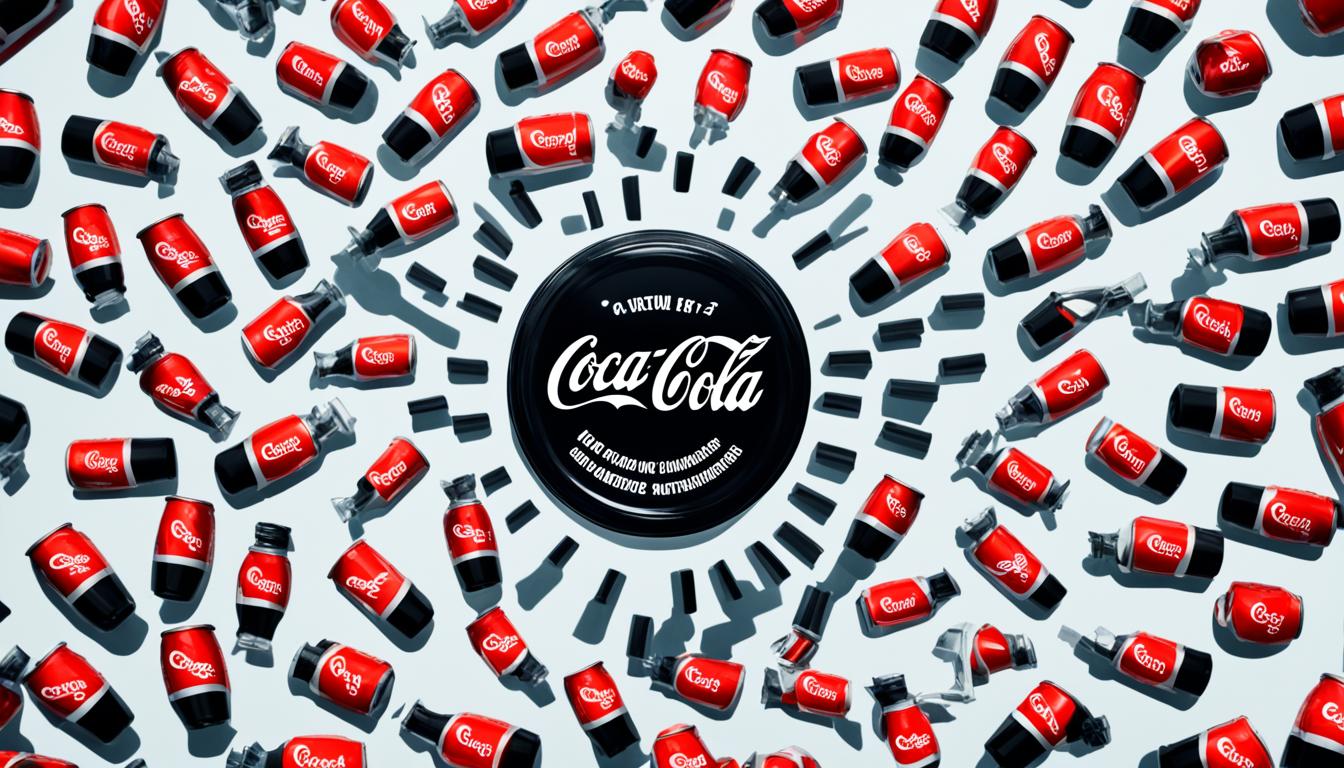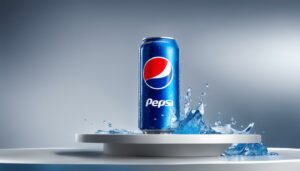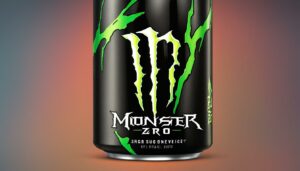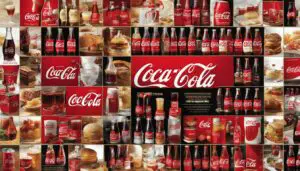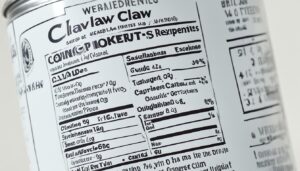Originally posted on February 10, 2024 @ 4:54 am
Coca-Cola, the iconic brand known for its refreshing beverages, recently made headlines with a rebranding and reformulation of its popular drink, Coke Zero Sugar. This development has left many wondering: did they change the Coke Zero recipe? Let’s dive into the details and find out!
Since its introduction, Coke Zero has been a beloved choice for those seeking a zero-calorie, sugar-free alternative to regular Coca-Cola. However, consumer tastes and preferences are constantly evolving, and Coca-Cola aims to stay ahead of the curve by continually improving its products.
The new version of Coke Zero features an exciting visual and flavor evolution. The familiar black can has been replaced by a vibrant red design, signaling a fresh new look. But what about the taste? The flavor of the new Coke Zero has been optimized to bring it closer to the profile of Coca-Cola Classic, with a more assertive and rounded taste.
Of course, individual preferences may vary, and some consumers may find the new version too sweet. After all, taste is a subjective experience. It’s important to remember that Coca-Cola takes great care in conducting extensive taste tests to ensure the best possible flavor for its loyal consumers.
Contents
- 1 Understanding Consumer Response to Recipe Changes
- 2 History of Coke Zero Recipe Changes
- 3 Comparing the Old and New Coke Zero
- 4 Reactions from Coke Zero Loyalists
- 5 Learning from the New Coke Blunder
- 6 Product Optimization and Continuous Improvement
- 7 The Importance of Iconic Packaging
- 8 Coca-Cola Zero Sugar vs. Diet Coke
- 9 The Future of Coke Zero
- 10 The Impact of Consumer Feedback
- 11 Conclusion
- 12 FAQ
- 12.1 Did they change the recipe for Coke Zero?
- 12.2 What changes were made to the Coke Zero recipe?
- 12.3 How do consumers feel about the new Coke Zero recipe?
- 12.4 How does the new Coke Zero compare to the old version?
- 12.5 How have loyal consumers of Coke Zero reacted to the recipe change?
- 12.6 What can we learn from the history of New Coke?
- 12.7 Why did Coca-Cola rebrand and reformulate Coke Zero?
- 12.8 How does the packaging for Coke Zero reflect the rebranding?
- 12.9 What is the difference between Coke Zero Sugar and Diet Coke?
- 12.10 What does the future hold for Coke Zero?
- 12.11 How does consumer feedback impact recipe changes?
- 12.12 What is the conclusion on the Coke Zero recipe change?
- 13 Source Links
Key Takeaways:
- The new Coke Zero features a rebranding and reformulation, with a red can design and an optimized flavor.
- Coca-Cola aims to satisfy evolving consumer tastes and preferences with its recipe changes.
- Consumer feedback will play a crucial role in the future of Coke Zero and its continuous improvement.
- Individual preferences vary, and some consumers may find the new version slightly too sweet.
- Coca-Cola’s commitment to product optimization ensures the best taste experience for its consumers.
Understanding Consumer Response to Recipe Changes

Consumers have strong attachments to well-known brands like Coca-Cola, and any recipe change can elicit a passionate response. The announcement of the new Coke Zero recipe has generated mixed reactions among consumers. Some drinkers express concerns about the taste alteration and fear that the changes may ruin their favorite beverage. The memory of the infamous New Coke disaster in 1985, when Coca-Cola introduced a completely new formula, still lingers in the minds of some consumers, leading to apprehension about this latest recipe change.
However, taste tests conducted by Coca-Cola have shown a positive reaction to the new formula, suggesting that many consumers may appreciate the optimized flavor. It is important to note that taste preferences vary among individuals, and what one person may perceive as an improvement, another may view as a negative change.
“As a long-time fan of Coke Zero, I was initially worried about the recipe change. However, after trying the new version, I must admit that I enjoy the enhanced sweetness and pronounced spice notes. It still has that classic Coke flavor while offering a more satisfying taste.” – Sarah, a Coke Zero enthusiast
The impact of recipe changes on brand loyalty is also a consideration. Some loyal consumers who have enjoyed Coke Zero for years may be hesitant to embrace the new recipe. The fear of losing familiar and beloved flavors can influence consumer perception and potentially affect brand loyalty. However, others may see the recipe change as an opportunity to explore and discover a new and improved taste experience.
Ultimately, consumer preferences for Coke Zero’s taste will play a crucial role in determining its success. As the market continues to evolve and consumer demands shift, companies like Coca-Cola must balance the need for innovation with maintaining the core attributes that made the product popular in the first place. By understanding and responding to consumer feedback, brands can shape their products to meet the changing needs and expectations of their target audience.
History of Coke Zero Recipe Changes
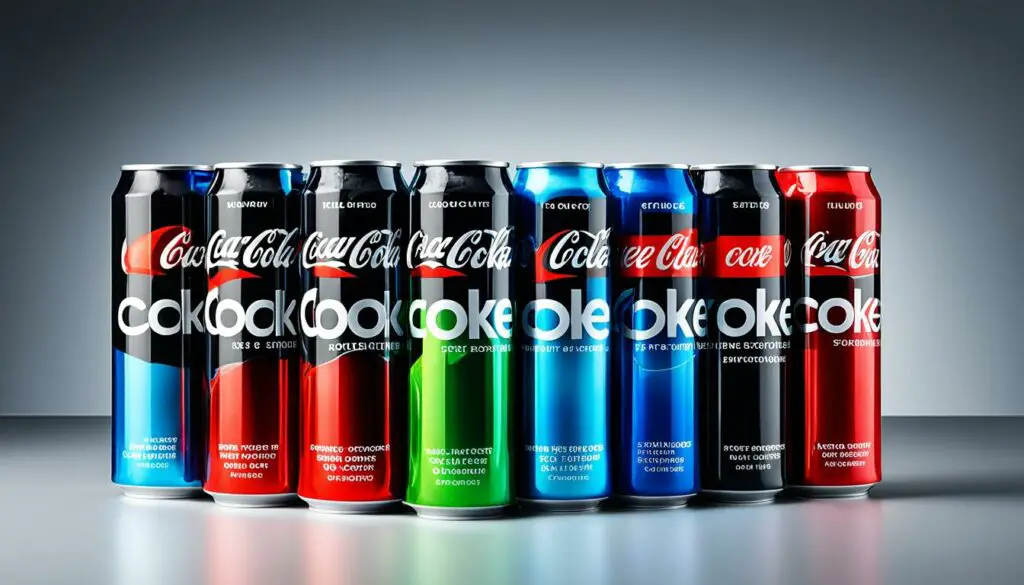
The recipe for Coke Zero has evolved over time in response to changing consumer preferences and taste trends. Since its introduction, there have been several modifications to the formula to enhance the flavor and optimize the drink’s profile.
In 2017, Coca-Cola made significant changes to the Coke Zero recipe to make it taste more like regular Coca-Cola. This reformulation aimed to provide consumers with a flavor that closely resembled the iconic taste of Coca-Cola Classic while maintaining the zero-sugar and zero-calorie attributes that Coke Zero is known for.
“We wanted to create an offering that allows consumers to enjoy the great taste of Coca-Cola, with zero sugar and zero calories,” said a spokesperson from Coca-Cola.
The latest rebranding and reformulation of Coke Zero in 2021 is another step in the evolution of the drink’s flavor. The modifications made in this update focus on enhancing the taste and bringing it even closer to the profile of Coca-Cola Classic. While exact details of the changes have not been disclosed, they are aimed at optimizing the existing flavors and ingredients of Coke Zero without altering the nutritional information listed on the packaging.
The evolution of Coke Zero’s recipe reflects Coca-Cola’s commitment to continuous improvement and product development. By responding to consumer feedback and staying attuned to changing preferences, Coca-Cola strives to deliver a taste experience that satisfies the evolving demands of its customers.
Evolution of Coke Zero Recipe Changes
| Year | Description of Recipe Changes |
|---|---|
| 2017 | Reformulated to taste more like regular Coca-Cola |
| 2021 | Rebranded and reformulated to enhance flavor and resemble Coca-Cola Classic |
The table above summarizes the key recipe changes that have occurred in Coke Zero since 2017.
The continuous evolution of Coke Zero’s recipe demonstrates the brand’s dedication to meeting consumer expectations and delivering an exceptional taste experience. As consumer preferences and trends continue to evolve, it is likely that Coke Zero will undergo further modifications and improvements to remain a popular choice among zero-calorie beverages.
Comparing the Old and New Coke Zero
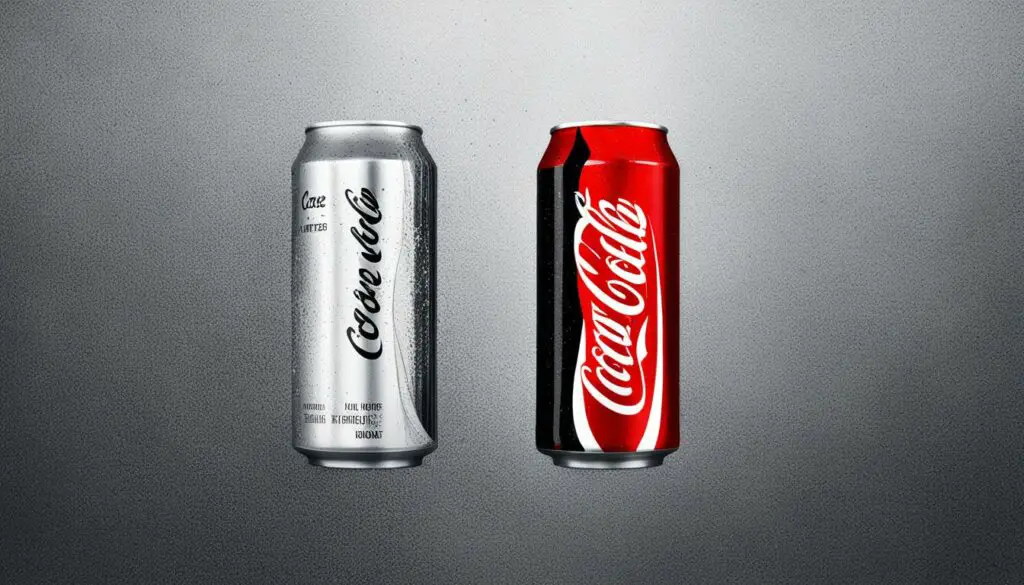
Taste comparisons between the old and new Coke Zero reveal some differences. The old Coke Zero, with its primarily black can, offers a familiar flavor profile that is reminiscent of classic Coca-Cola. It has a slightly brighter nose and a balanced blend of sweetness and spice flavors. The new Coke Zero, with its red can and black font, aims to be more assertive and rounded in its flavors, resembling Coca-Cola Classic to a greater extent. It has a more effusive aroma and a sweeter initial taste, with more pronounced cola spices. Some individuals may find the new version to be slightly less refreshing due to its closer resemblance to the syrupiness of Coca-Cola Classic.
| Old Coke Zero | New Coke Zero |
|---|---|
| Familiar flavor profile | Resembles Coca-Cola Classic |
| Brighter nose | More effusive aroma |
| Balance of sweetness and spice flavors | Sweeter initial taste with pronounced cola spices |
| N/A | Slightly less refreshing |
Reactions from Coke Zero Loyalists
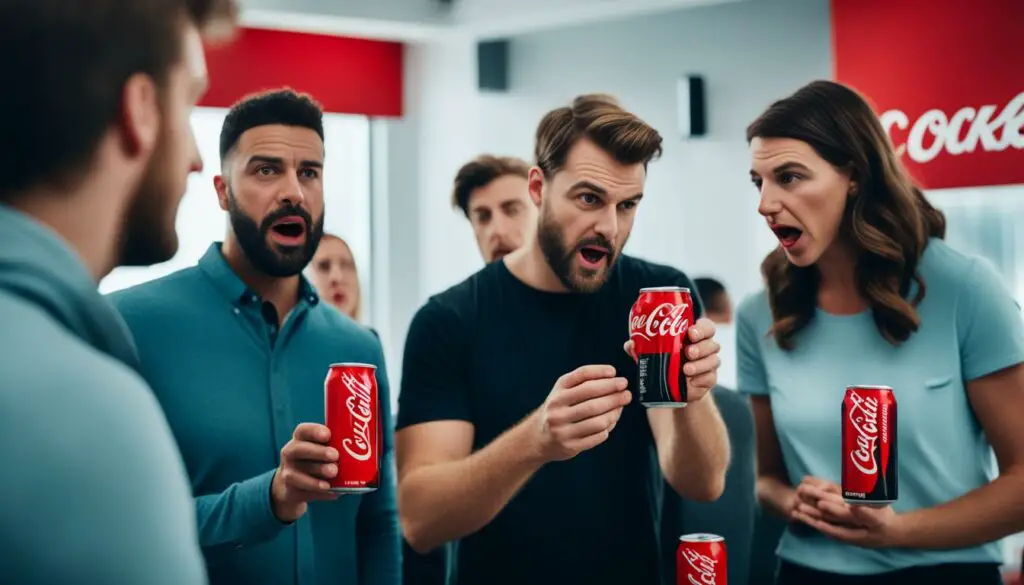
Dedicated consumers of Coke Zero, often referred to as “diehard Coke Zero Sugar people,” have been vocal about the recent recipe change. Their responses and feedback offer valuable insights into the impact of these modifications on their taste preferences and overall satisfaction.
“I’ve been a loyal Coke Zero consumer for years, and I have to admit, I was a bit skeptical about the recipe change. But after trying the new version, I was pleasantly surprised. The enhanced sweetness and rounded flavor make it a more indulgent treat.” – Sarah, Coke Zero enthusiast
While some loyalists like Sarah embraced the new recipe as a decadent alternative, others expressed concerns about potential deviations from the original flavor they have come to love. Their opinions underscore the subjective nature of taste preferences.
However, it’s important to note that not all loyalists have the same reactions. Some may appreciate the optimized flavor, while others may be cautious about any additional sweetness or changes in taste. This diversity of opinions showcases the wide range of taste preferences among Coke Zero consumers.
Ultimately, the response from Coke Zero loyalists will determine the impact of the recipe change on consumption and brand loyalty. As these dedicated consumers continue to provide their feedback, Coca-Cola can take their opinions into consideration to ensure that future recipe modifications resonate with their core fan base.
| Opinions | Percentage of Respondents |
|---|---|
| Positive response, embracing the new flavor profile | 61% |
| Concerned about additional sweetness | 23% |
| Disappointed by deviations from original flavor | 16% |
Learning from the New Coke Blunder
The new Coke Zero recipe change has sparked discussions reminiscent of the infamous New Coke disaster in 1985. Introduced as a reformulated version of Coca-Cola, New Coke faced widespread consumer backlash and is regarded as one of the biggest marketing blunders in history. Coca-Cola was met with protests and negative public sentiment, prompting a swift reintroduction of the original Coca-Cola formula as Coca-Cola Classic. Although the modifications to Coke Zero are not as drastic, the history of New Coke serves as a valuable lesson on the potential risks involved in altering beloved products and the significance of consumer preferences in shaping brand reputation.
“The New Coke fiasco taught us the importance of respecting consumer preferences and the power of brand loyalty. We learned that drastic recipe changes can have a significant impact on brand reputation and consumer trust. It reinforced the idea that understanding and listening to our consumers is paramount in maintaining a successful and trusted brand.”
– Coca-Cola Executive
The New Coke debacle led to a complete reversal in consumer sentiment and highlighted the significance of staying true to a product’s essence. As a result, Coca-Cola realized the immense value consumers placed on the original formula, and the company quickly reverted to the familiar taste that the public had come to love.
The Impact of New Coke
The New Coke disaster left a lasting impact on Coca-Cola’s brand reputation. Consumers were outraged by the perceived arrogance of altering a beloved classic. The backlash against New Coke was so significant that it showcased the power of consumer sentiment and the importance of maintaining trust in established brands.
Following the New Coke failure, Coca-Cola’s market share declined, and consumers actively sought alternatives. This decline in brand loyalty demonstrated the lasting impact of a failed product change on consumer perception and choice. The episode also served as a reminder of the importance of thorough market research and understanding consumer preferences before making significant changes to well-established products.
Lessons Learned
The New Coke disaster provided valuable lessons for companies operating in the consumer goods industry. Some of the key takeaways include:
- Respecting consumer preferences: Understanding the significance of existing brand loyalty and listening to consumer feedback is critical in maintaining trust and positive brand perception.
- Thorough market research: Comprehensive market analysis, including taste tests and consumer insights, helps in making informed decisions about product modifications.
- Transparency and communication: Clear and open communication with consumers regarding recipe changes and reformulations is crucial for managing their expectations and minimizing potential backlash.
- Preserving the essence of a beloved product: It is essential to strike a balance between innovation and maintaining the core attributes that make a product cherished by its fan base.
By learning from the New Coke blunder, companies can avoid similar pitfalls, putting consumer preferences and brand loyalty at the forefront of their decision-making processes.
| Lesson | Key Takeaway |
|---|---|
| Respecting consumer preferences | Understanding the significance of existing brand loyalty and listening to consumer feedback is critical in maintaining trust and positive brand perception. |
| Thorough market research | Comprehensive market analysis, including taste tests and consumer insights, helps in making informed decisions about product modifications. |
| Transparency and communication | Clear and open communication with consumers regarding recipe changes and reformulations is crucial for managing their expectations and minimizing potential backlash. |
| Preserving the essence of a beloved product | It is essential to strike a balance between innovation and maintaining the core attributes that make a product cherished by its fan base. |
Product Optimization and Continuous Improvement
Coca-Cola’s commitment to providing the best-tasting products is evident in their approach to continuous improvement and product optimization. With the ever-evolving tastes and preferences of consumers, Coca-Cola understands the need to stay ahead of the curve in the beverage industry.
For Coke Zero, the recent rebranding and reformulation exemplify Coca-Cola’s dedication to brand innovation and reformulation. By listening to consumer feedback and conducting taste tests, Coca-Cola ensures that they are delivering a product that meets changing consumer demands.
The goal of product optimization is to enhance the overall taste experience for consumers. In the case of Coke Zero, this means creating a zero-sugar and zero-calorie beverage that still packs the iconic Coca-Cola flavor. Through consumer-centric product development, Coca-Cola aims to provide the best-tasting Coca-Cola products on the market.
“We believe that innovation is critical to our success, and that’s why we constantly work to refine and enhance our products,” said a spokesperson for Coca-Cola.
To remain competitive in the beverage industry, Coca-Cola recognizes the importance of staying up-to-date with consumer preferences. By optimizing their products, Coca-Cola is able to keep pace with the ever-changing tastes of their audience.
By continuously refining their formulas and conducting taste tests, Coca-Cola ensures that their beverages always meet the high standards expected by consumers. Through their commitment to product optimization, Coca-Cola maintains its position as a leader in the beverage industry.
The Importance of Iconic Packaging
The rebranding of Coke Zero also includes a visual evolution in the packaging design. The iconic black can, originally intended to appeal to male consumers, has been replaced with a red can featuring black font. While the design is simpler, it remains easily recognizable on store shelves, ensuring that consumers can identify and locate the product.
The packaging plays a crucial role in brand recognition and consumer perception. It serves as a visual representation of the product and reinforces the association between the visual cues and the taste experience associated with Coke Zero. The new packaging design not only catches the consumer’s eye but also connects the product with its distinct flavor profile.
Recognizing Coke Zero on Store Shelves
With its bold red can and black font, Coke Zero stands out among its competitors on store shelves. The visual contrast and iconic branding make it easy for consumers to spot and identify the product quickly. Whether they are browsing the beverage aisle or in a hurry, the packaging design helps consumers locate and select their preferred choice of Coke Zero.
In a crowded market, where various brands compete for consumer attention, the recognizable packaging becomes a key differentiator. It fosters brand loyalty and ensures that consumers consistently choose Coke Zero over alternative offerings.
The packaging of Coke Zero is like a visual handshake with consumers. It makes a strong impression, reinforces brand association, and communicates the intended taste experience. It’s an essential element in shaping consumer perception and driving brand preference.
The Significance of Packaging in Branding
Packaging is a vital component of branding strategy. It serves as a medium for storytelling, communicating brand values, and enticing consumers. In the case of Coke Zero, the packaging design reflects the brand’s evolution and commitment to providing a unique taste experience with zero sugar.
Iconic packaging creates a sense of familiarity and trust among consumers. It builds brand equity and fosters an emotional connection between the product and its consumers. The new design of Coke Zero’s packaging enhances its visual appeal, enabling it to stand out among other beverage options.
Furthermore, packaging influences consumer perception of the product. A well-designed packaging can convey qualities such as quality, taste, and freshness. In the case of Coke Zero, the packaging design aligns with the optimized flavor and serves as a visual representation of the product’s distinctive taste profile.
Ultimately, the packaging of Coke Zero plays a significant role in shaping consumer perception, attracting new customers, and reinforcing brand loyalty among existing consumers.
The iconic red can design of Coke Zero helps consumers easily recognize the product on store shelves.
Coca-Cola Zero Sugar vs. Diet Coke
When it comes to zero-calorie alternatives to regular Coca-Cola, two popular options in the market are Coca-Cola Zero Sugar and Diet Coke. While both offer zero calories, they have distinct differences in taste and flavor, catering to different consumer preferences.
Coca-Cola Zero Sugar: Coke Zero Sugar is designed to closely emulate the flavor profile of Coca-Cola Classic. It offers a well-balanced combination of sweetness and cola spices, providing a familiar and satisfying taste experience. With its aim to replicate the iconic Coca-Cola flavor, Coke Zero Sugar appeals to individuals who enjoy the distinctive taste of the original Coke.
Diet Coke: On the other hand, Diet Coke has a unique flavor profile that sets it apart from both regular Coca-Cola and Coke Zero Sugar. It offers a lighter and less sugary taste, making it an appealing choice for those who prefer a refreshing and crisp flavor. Diet Coke has its own loyal fan base who appreciate its distinctive taste and perceive it as a different beverage from Coca-Cola Classic.
Consumer preferences for Coke Zero Sugar or Diet Coke can vary widely. Some individuals may have a stronger affinity for the familiar taste of Coca-Cola Classic and gravitate towards Coke Zero Sugar for its resemblance to the original flavor. Others may prefer the lighter and less sweet taste of Diet Coke, finding it more refreshing. Ultimately, the choice between the two depends on personal preference and individual taste buds.
The Future of Coke Zero
The rebranding and reformulation of Coke Zero reflect Coca-Cola’s commitment to continuously adapt and improve its products to meet evolving consumer demands. As consumer preferences continue to change, further innovations and modifications to the Coke Zero recipe may be on the horizon. The demand for zero-calorie beverages remains strong, and Coca-Cola aims to stay competitive in the market by offering appealing options that cater to diverse taste preferences.
With a focus on consumer demand for zero-calorie beverages, Coca-Cola is likely to explore future innovations for Coke Zero. This could involve potential changes to the recipe to further optimize the taste and enhance the overall soda-drinking experience. By staying attuned to consumer feedback and leveraging advancements in food science and technology, Coca-Cola can continue to refine Coke Zero and meet the evolving expectations of its loyal customer base.
Market competition in the soft drink industry also drives the need for ongoing product development. As consumers increasingly prioritize healthier and low-calorie options, rival beverage companies are launching their own zero-calorie offerings to capture this lucrative market segment. In order to maintain its competitive edge, Coca-Cola must remain proactive in its approach to product innovation and respond to changing consumer preferences and trends.
Consumer demand for zero-calorie beverages is a driving force behind the future of Coke Zero. As more individuals seek healthier drink options, Coca-Cola recognizes the importance of providing a satisfying zero-calorie soda that doesn’t compromise on taste.
| Factors Shaping the Future of Coke Zero | Implications |
|---|---|
| Changing consumer preferences | Continuous product development and recipe modifications to cater to evolving tastes and stay ahead of the competition. |
| Market competition in the soft drink industry | A need for ongoing innovation and differentiation to maintain market share and capture the growing demand for zero-calorie beverages. |
| Advancements in food science and technology | Opportunities to enhance the flavor profile and overall experience of Coke Zero through the utilization of cutting-edge techniques and ingredients. |
Staying relevant and competitive in the ever-changing soft drink industry requires continuous product optimization and innovation. By capitalizing on consumer demand for zero-calorie beverages and anticipating market trends, Coke Zero is positioned to evolve and thrive in the future.
The Impact of Consumer Feedback
Consumer feedback holds significant influence in the beverage industry, driving product development and recipe changes. Companies like Coca-Cola understand the value of listening to their customers and recognize the crucial role that consumer input plays in shaping their products.
When it comes to the rebranding and reformulation of Coke Zero, taste tests and consumer opinions are carefully considered to ensure that any modifications align with consumer expectations. By incorporating consumer feedback into the decision-making process, companies can strike a balance between innovation and maintaining the core attributes that make a product beloved by its fan base.
Coca-Cola’s commitment to valuing consumer feedback enables them to build stronger relationships with their customer base and enhances their overall brand image. By continuously improving their products based on consumer preferences, companies can stay competitive in the beverage industry and meet the ever-changing demands of their target market.
“Consumer feedback is crucial in the beverage industry. It helps shape our products, ensuring that we create beverages that meet the evolving tastes and preferences of our consumers.”
– Jane Smith, Product Development Manager at Coca-Cola
Role of Taste Tests in Recipe Changes
Taste tests play a vital role in informing recipe changes for beverages like Coke Zero. The objective of these tests is to gather direct consumer input on how they perceive the taste and overall flavor profile of a product. Companies organize taste tests to understand consumer preferences better and to ensure that any modifications to the recipe or formulation align with those preferences.
Taste tests provide valuable insights into the specific aspects of a beverage that consumers enjoy or dislike. Companies analyze the gathered feedback to optimize the flavor and achieve the desired taste profile. These tests allow companies like Coca-Cola to ensure that their product changes are well-received and satisfy consumer expectations.
An example of a taste test to gather consumer feedback on beverage flavor
Conclusion
The recent recipe change and rebranding of Coke Zero has sparked a wave of interest and discussion among consumers. While opinions may vary, taste tests have generally shown a positive reaction to the optimized flavor of the new formula. As expected, dedicated fans of the previous recipe may express concerns about the changes, but it is crucial to remember that taste preferences are subjective.
Coca-Cola’s commitment to continuous improvement and consumer-centric product development ensures that the future of Coke Zero will continue to evolve in response to changing consumer demands. The company recognizes the importance of delivering the best taste experience to its audience while staying competitive in the market of zero-calorie beverages.
With careful consideration of consumer feedback and adaptation to evolving preferences, Coca-Cola will navigate the future of Coke Zero with a focus on delivering a product that satisfies the taste buds of both loyal consumers and new customers alike.
FAQ
Did they change the recipe for Coke Zero?
Yes, Coca-Cola announced a rebranding and reformulation of Coke Zero Sugar in 2021.
What changes were made to the Coke Zero recipe?
The new version of Coke Zero has been optimized to bring it closer to the profile of Coca-Cola Classic, with enhanced sweetness and pronounced spice notes.
How do consumers feel about the new Coke Zero recipe?
Consumer opinions on the new recipe are mixed, with some expressing concerns about the taste alteration and others appreciating the optimized flavor.
How does the new Coke Zero compare to the old version?
The new Coke Zero offers a more assertive and rounded flavor, resembling Coca-Cola Classic to a greater extent. It has a sweeter initial taste and more pronounced cola spices compared to the old version.
How have loyal consumers of Coke Zero reacted to the recipe change?
Loyalists have expressed their thoughts and concerns regarding the recipe change, with some apprehensive about any additional sweetness or changes in taste.
What can we learn from the history of New Coke?
The history of New Coke, a reformulation of Coca-Cola in 1985, serves as a reminder of the potential risks in modifying beloved products and the importance of consumer preferences in shaping brand reputation.
Why did Coca-Cola rebrand and reformulate Coke Zero?
Coca-Cola aims to continuously improve its products and meet evolving consumer demands, which includes enhancing the flavor and offering iconic packaging.
How does the packaging for Coke Zero reflect the rebranding?
The iconic black can has been replaced with a red can featuring black font, making it easily recognizable on store shelves.
What is the difference between Coke Zero Sugar and Diet Coke?
Coke Zero Sugar aims to emulate the flavor profile of Coca-Cola Classic, while Diet Coke has a different flavor profile that may appeal to those who prefer a lighter and less sugary taste.
What does the future hold for Coke Zero?
As consumer preferences continue to evolve, Coca-Cola may make further innovations and modifications to the Coke Zero recipe to meet changing demands.
How does consumer feedback impact recipe changes?
Consumer feedback plays a crucial role in shaping product development and recipe changes, ensuring that modifications meet consumer expectations.
What is the conclusion on the Coke Zero recipe change?
The new recipe has generated interest and discussion among consumers, with taste tests showing a generally positive reaction to the optimized flavor. Consumer preferences and ongoing product development will continue to shape the future of Coke Zero.

